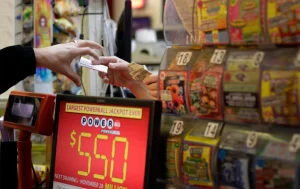The Unlikely Pair: Finding Mindfulness in the Shuffle of a Card Deck

When you think of mindfulness, what comes to mind? Probably a quiet room, a yoga mat, maybe the scent of lavender. A deck of cards? Not so much. Card games are usually associated with strategy, luck, and, let’s be honest, a bit of competitive fire.

But here’s the deal: the very mechanics of playing cards—the shuffle, the deal, the turn of a card—can become a powerful, moving meditation. It’s all about where you place your attention. Let’s explore this fascinating intersection of card games and mindfulness practices.
Beyond the Bluff: Card Games as a Focus Anchor
At its core, mindfulness is the practice of anchoring your awareness in the present moment. People often use their breath or bodily sensations as this anchor. But any repetitive, tactile activity can serve the same purpose. And shuffling a deck? It’s a perfect candidate.
The sound of the cards riffling together. The feel of the laminated paper against your fingertips. The visual pattern of the bridge shuffle. This isn’t just a pre-game ritual; it’s a sensory experience that can ground you, pulling you out of a spinning mind and into the “now.” It’s a kinetic anchor, you know?
The Mindful Mechanics of Play
Every part of a card game can be reframed as a mindfulness exercise. Seriously.
- The Shuffle: This is your centering breath. Instead of thinking about your next move or the last hand, focus entirely on the action. The weight of the deck. The specific motion of your hands. It’s a reset button for your focus.
- The Deal: This is about observing without judgment. Watch the cards land in front of you. Notice any immediate reactions—excitement, disappointment—and then let them pass without getting hooked. It’s a practice in non-attachment.
- The Turn of a Card: This moment is pure, unadulterated present-moment awareness. The outcome is unknown until the very second it’s revealed. Can you sit with that anticipation without spiraling into “what ifs”?
Solitaire and Stillness: A Case Study in Solo Practice
You don’t even need another person. Classic Solitaire (or Patience, for some) is a fantastic solo mindfulness card game. The goal isn’t just to win—honestly, the digital version can be brutally random. The real goal is to engage in a flow state.
You’re scanning the tableau, making small decisions, moving cards based on clear rules. This rhythmic, pattern-seeking activity can quiet the mental chatter like few other things. It’s a moving puzzle that demands just enough brainpower to keep you engaged, but not so much that it causes stress. It’s a form of active rest for a tired mind.
What About Multiplayer Games?
Okay, sure. Playing against others introduces a whole new element: emotional regulation. This is where the real advanced practice begins.
Think about a game of Poker. A bad beat can trigger frustration. A great hand can spark greed. A mindful player notices these emotions rising—feels the heat in their cheeks, the quickening pulse—but doesn’t let them dictate their actions. They become an observer of their own internal state, which is, in fact, the entire point of mindfulness. It’s not about suppressing emotion; it’s about creating space between the feeling and your reaction.
| Mindfulness Concept | Card Game Equivalent |
| Observing Without Judgment | Noticing a bad hand without blaming luck or yourself. |
| Staying Present | Focusing on the current trick in Bridge, not the last one. |
| Emotional Regulation | Maintaining a “poker face” despite inner turmoil. |
| Acceptance | Letting go of a game loss and simply shuffling again. |
A Simple Practice: Your 5-Minute Mindful Card Ritual
You can try this right now. All you need is a deck of cards and five minutes.
- Find a Quiet Space: Sit comfortably at a table. Place the deck in front of you.
- Pick Up the Deck: Feel its weight. Notice the temperature of the cards. Are they cool? Smooth?
- Shuffle Slowly: Don’t rush. Pay close attention to the sound and the feel of the cards interweaving. If your mind wanders, gently guide it back to the sensation in your hands.
- Deal One Card: Turn it over slowly. Observe the card. Its color, its number, its symbol. Just look at it. No need to assign meaning or start a game.
- Breathe: Take one deep breath, still looking at the card. Then, place it aside and repeat.
That’s it. It’s a tiny, accessible practice that builds the muscle of attention.
The Bigger Picture: Why This Combo Works Now
In our hyper-digital world, we’re starved for tactile, analog experiences. We scroll endlessly, our attention fractured across a dozen tabs and notifications. Picking up a physical deck of cards is a radical act of focus. It demands you put the phone down. It engages multiple senses in a way a screen simply cannot.
This isn’t just about reducing stress—though it does that wonderfully. It’s about reclaiming your attention. It’s about finding little pockets of peace in the rhythm of a familiar game. The next time you sit down to play, whether it’s a intense game of Hearts with friends or a quiet round of Solitaire, see if you can bring just a little more awareness to the process.
Notice the texture. Listen to the shuffle. Watch the cards fall. You might just find that the path to a calmer mind was hiding in plain sight, right there in the deck you’ve had all along.








